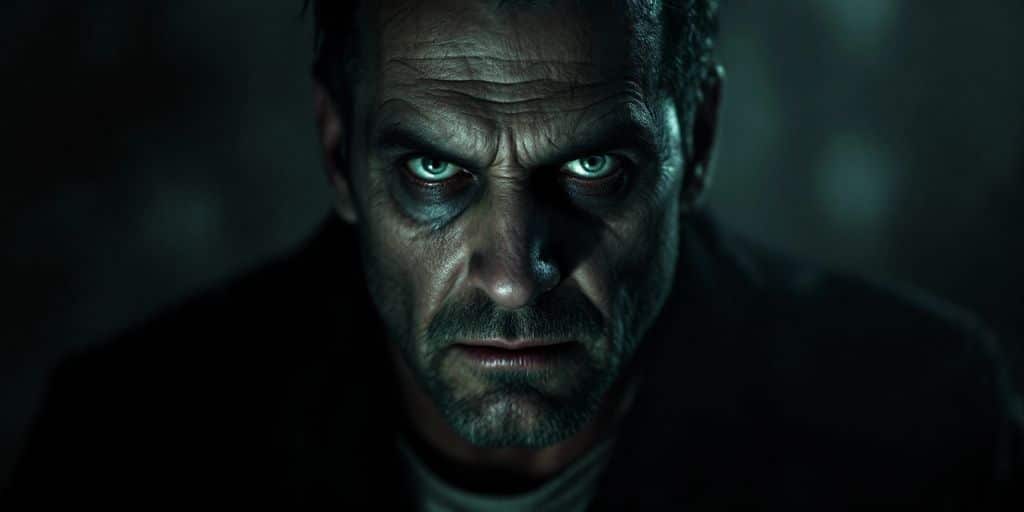This article takes a deep dive into the chilling lives of some of history’s most dangerous serial killers. From their early years and psychological profiles to their gruesome methods and the impact of their crimes, each story reveals a disturbing glimpse into the minds of these criminals. Understanding their backgrounds not only sheds light on their behaviors but also helps society recognize the signs of such dangerous individuals. This exploration is both fascinating and unsettling, as it highlights the darkness that can lurk within seemingly ordinary people.
Key Takeaways
- Ted Bundy used his charm to trick young women into trusting him before he attacked.
- Jeffrey Dahmer committed horrifying acts, including cannibalism and keeping body parts as trophies.
- The Zodiac Killer remains unknown, sending cryptic letters that continue to puzzle investigators.
- Gary Ridgway, the Green River Killer, confessed to killing 71 women, making him one of the most prolific killers in U.S. history.
- Dennis Rader, known as the BTK Killer, lived a double life as a family man while committing brutal murders.
The Infamous Crimes of Ted Bundy
Early Life and Psychological Profile
Ted Bundy was born in 1946 and raised in a seemingly normal family. However, his childhood was troubled, which shaped his dark future. Bundy was known for his charm and intelligence, traits that helped him lure his victims. He was often described as a charismatic manipulator, which made him even more dangerous.
Modus Operandi and Victim Profile
Bundy primarily targeted young women, often college students. He used his good looks and charm to gain their trust before abducting them. His methods included:
- Kidnapping: Pretending to be injured or in need of help.
- Deception: Using various disguises to trick his victims.
- Brutality: Committing horrific acts, including assault and murder.
Capture and Trial
Bundy was first arrested in 1975 for kidnapping but managed to escape custody twice. His final capture in 1978 led to a highly publicized trial, notable for being one of the first to be televised. Bundy represented himself, showcasing his manipulative skills. He was ultimately convicted and sentenced to death.
Legacy and Cultural Impact
Ted Bundy’s crimes left a lasting mark on American society. His story has been the subject of numerous books, documentaries, and films. The fascination with Bundy reflects a broader interest in serial killers and their chilling crimes. His legacy continues to haunt the public imagination, making him one of the most notorious figures in criminal history.
Bundy’s case serves as a chilling reminder of how charm can mask true evil, leading to devastating consequences.
The Horrors of Jeffrey Dahmer
Background and Early Signs
Jeffrey Dahmer, often called "The Milwaukee Monster," was born in 1960 in Milwaukee, Wisconsin. His childhood was marked by a troubled family life, particularly due to his mother’s mental health issues. From a young age, Dahmer displayed disturbing behaviors, such as killing small animals and collecting their bones. These early signs hinted at a dark future.
Gruesome Murders and Cannibalism
Between 1978 and 1991, Dahmer committed horrific acts, killing and dismembering 17 young men and boys. His methods were particularly gruesome, involving necrophilia and cannibalism. Dahmer often kept body parts in his apartment, and he even took photographs of his victims. The sheer brutality of his crimes shocked the nation.
| Year | Victim Count | Notable Crime |
|---|---|---|
| 1978 | 1 | First murder |
| 1991 | 17 | Arrested |
Capture and Trial
Dahmer’s downfall began when Tracy Edwards, a would-be victim, managed to escape and alert the police. When authorities arrived at Dahmer’s apartment, they discovered a scene of horror. Dahmer was arrested in 1991, and during his trial, he pleaded insanity. However, the court found him sane and guilty of 15 murders, leading to a life sentence without parole.
Media Coverage and Public Reaction
The media frenzy surrounding Dahmer’s case was immense. His story captivated the public, leading to numerous documentaries and books. Many were left wondering how someone could commit such heinous acts, and his case became a chilling reminder of the darkness that can exist within individuals.
Dahmer’s legacy serves as a stark reminder of the complexities of human nature and the potential for evil that can lurk beneath the surface.
The Zodiac Killer: Unsolved Mystery
Series of Murders and Letters
The Zodiac Killer is one of the most notorious and mysterious serial killers in American history. He operated in Northern California during the late 1960s and early 1970s, committing a series of brutal murders. His first confirmed victims were high school students Betty Lou Jensen and David Faraday, who were shot on December 20, 1968. Over the next year, he continued his spree, targeting couples in secluded areas. One of the most chilling attacks occurred on September 27, 1969, when Bryan Hartnell and Cecelia Shepard were stabbed near Lake Berryessa. Hartnell survived, becoming one of the few witnesses to encounter the Zodiac Killer and live to tell the tale.
The killer is also infamous for sending cryptic letters to local newspapers, taunting the police and the public. These letters often included ciphers that challenged readers to decode them. Some of these ciphers remain unsolved to this day, adding to the mystery surrounding his identity.
Investigation and Suspects
Despite numerous investigations, the Zodiac Killer has never been caught. Over the years, many theories and suspects have emerged, but none have been definitively proven. Some believe the killer was a disgruntled loner, while others think he may have had military or law enforcement training. The case remains open, and new leads continue to be investigated, keeping hope alive that one day the Zodiac Killer will be identified.
Theories and Speculations
Several theories have emerged regarding the identity of the Zodiac Killer:
- Royal Conspiracy: Some believe he was a member of the royal family, possibly trying to cover up a scandal.
- Local Butcher: Others suggest he was a butcher or someone with medical training, given the precision of the mutilations.
- Multiple Killers: Some theories propose that there may have been more than one person involved in the murders.
Impact on Pop Culture
The Zodiac Killer has left a lasting mark on pop culture, inspiring countless books, movies, and documentaries. His cryptic messages and eerie persona have fascinated and horrified audiences for decades. The case continues to be a subject of intense interest and speculation, ensuring that the Zodiac Killer’s legacy endures.
The Zodiac Killer’s case remains open, leaving many questions unanswered and a chilling legacy that continues to haunt the public.
The case has been described as "arguably the most famous unsolved murder case in American history," and has become both a fixture of popular culture and a focus for amateur sleuths and investigators alike.
The Green River Killer: Gary Ridgway

Early Life and Psychological Profile
Gary Leon Ridgway, born on February 18, 1949, is an American serial killer known as the Green River Killer. He had a troubled childhood, marked by a difficult relationship with his mother and early signs of violent behavior. Ridgway struggled with feelings of inadequacy and often expressed anger towards women, which would later influence his horrific actions.
Series of Murders and Victim Profile
Ridgway’s killing spree lasted from 1982 to 1998, during which he confessed to murdering 71 women, primarily targeting sex workers in the Seattle area. His victims were often vulnerable, and he would lure them with promises of money or drugs. Here’s a brief overview of his known victims:
| Victim Name | Age | Date of Disappearance | Location |
|---|---|---|---|
| Wendy Lee Coffield | 16 | 1982 | Seattle, WA |
| Opal Charmaine Mills | 16 | 1983 | Seattle, WA |
| Kimberly Diane Nelson | 21 | 1983 | Seattle, WA |
Investigation and Arrest
The investigation into Ridgway’s crimes was extensive, involving multiple law enforcement agencies. He was finally arrested in 2001 after DNA evidence linked him to several victims. Ridgway initially denied his involvement but later confessed, leading to a plea deal that spared him the death penalty in exchange for revealing the locations of his victims’ remains.
Trial and Sentencing
In 2003, Ridgway was sentenced to life without parole after pleading guilty to 49 counts of murder. His case highlighted the challenges of identifying and capturing serial killers, especially those who prey on marginalized individuals. Ridgway’s actions have had a lasting impact on criminal profiling and law enforcement practices.
Ridgway’s chilling confessions and the sheer number of his victims serve as a stark reminder of the darkness that can exist within individuals, often hidden behind a facade of normalcy.
The BTK Killer: Dennis Rader
Background and Early Life
Dennis Rader, known as the BTK Killer, was born on March 9, 1945, in Pittsburg, Kansas. He grew up in a strict household and was often described as a quiet child. Rader’s early life was marked by a fascination with control and power, which later manifested in his horrific crimes.
Series of Murders and Modus Operandi
Rader’s killing spree began in 1974 and lasted until 1991, during which he murdered ten people in Sedgwick County, Kansas. His modus operandi included:
- Strangulation: Most of his victims were strangled, often with their own clothing.
- Planning: Rader meticulously planned his attacks, often stalking his victims beforehand.
- Taunting Police: He sent letters to the police and media, detailing his crimes and mocking law enforcement.
| Year | Victims | Method |
|---|---|---|
| 1974 | 4 | Strangulation |
| 1977 | 2 | Strangulation |
| 1985 | 1 | Strangulation |
| 1991 | 3 | Strangulation |
Capture and Confession
Rader was finally captured in 2005 after a DNA match linked him to the crimes. During his confession, he revealed chilling details about his killings, showing no remorse. He was sentenced to ten consecutive life terms without the possibility of parole.
Impact on Criminal Profiling
The BTK case significantly influenced criminal profiling techniques. Rader’s ability to evade capture for decades highlighted the need for improved methods in understanding and catching serial killers. His case is often studied in criminal psychology courses to illustrate the complexities of criminal behavior.
The BTK Killer’s story serves as a chilling reminder of how ordinary individuals can harbor dark secrets, leading to unimaginable horrors.
The Unsolved Mystery of the Black Dahlia
The Brutal Murder of Elizabeth Short
The murder of Elizabeth Short, famously known as the Black Dahlia, is one of the most notorious unsolved crimes in American history. In January 1947, her body was found in a vacant lot in Los Angeles, cut in half and severely mutilated. The shocking nature of this crime left the nation in disbelief and sparked a media frenzy.
The Investigation and Theories
The investigation into Short’s murder was extensive, involving numerous suspects and theories. Here are some key points:
- Multiple suspects: Over 150 individuals were investigated, but no one was ever charged.
- Media involvement: The press played a significant role, often sensationalizing the case and creating public interest.
- Theories: Various theories emerged, including connections to Hollywood, organized crime, and even a possible serial killer.
Cultural Impact and Legacy
The Black Dahlia case has had a lasting impact on popular culture. It has inspired numerous books, movies, and documentaries. The case remains a symbol of the dark side of Hollywood and the unsolved mysteries that continue to captivate the public.
The Black Dahlia murder is a chilling reminder of the unsolved crimes: cases that still baffle investigators, leaving behind a trail of questions and intrigue.
The Infamous Case of the Golden State Killer

The Crimes and Modus Operandi
The Golden State Killer, also known as Joseph James DeAngelo, was a criminal who caused fear across California from the mid-1970s to the mid-1980s. He is linked to at least 13 murders and over 50 rapes. His method often involved breaking into homes at night, tying up victims, and committing horrific acts. His ability to evade capture for decades made him a chilling figure in true crime history.
Breakthroughs in the Investigation
The investigation into the Golden State Killer’s crimes was long and complex. It involved:
- Extensive DNA testing: This technology was crucial in linking DeAngelo to the crimes.
- Cold case reviews: Many old cases were reopened, leading to new insights.
- Public appeals: Law enforcement sought help from the community, which played a role in gathering information.
The Arrest and Conviction
In April 2018, DeAngelo was arrested after a DNA match linked him to the crimes. His arrest was a significant moment in true crime history, as it showcased the power of modern forensic science. In 2020, he was sentenced to life in prison without the possibility of parole, bringing some closure to the victims’ families.
The Golden State Killer case highlights the importance of advancements in forensic science and the relentless pursuit of justice.
This case has also inspired numerous documentaries and media portrayals, including the Oxygen documentary "Murder on the Sleepy Lagoon," which explores the chilling details of DeAngelo’s reign of terror across California.
| Year | Crime Type | Location |
|---|---|---|
| 1976 | Rape | Sacramento |
| 1980 | Murder | Goleta |
| 1986 | Murder | Orange County |
The Golden State Killer remains a haunting reminder of the dark side of human nature and the ongoing quest for justice.
The Golden State Killer case shocked the nation, revealing the dark side of crime that can lurk in any community. If you’re curious to learn more about this chilling story and explore other fascinating topics, visit our website for exclusive content and resources. Don’t miss out on the chance to dive deeper into the mysteries that surround us!
Final Thoughts on the Dark Legacy of Serial Killers
In wrapping up our exploration of the most dangerous serial killers in history, we are left with a mix of fear and fascination. These individuals, from Ted Bundy to the Zodiac Killer, remind us of the darker sides of human nature. Their stories are not just about the crimes they committed, but also about the lives they shattered and the communities they terrorized. While we may never fully understand what drives someone to commit such horrific acts, studying these cases helps us learn about the complexities of human behavior. As we reflect on these chilling tales, we are reminded of the importance of vigilance and compassion in our society.
Frequently Asked Questions
Who was Ted Bundy and what did he do?
Ted Bundy was a serial killer known for his charm. He targeted young women, often pretending to need help to lure them.
What crimes did Jeffrey Dahmer commit?
Jeffrey Dahmer killed 17 young men and boys, and he was known for shocking acts like cannibalism.
What is the Zodiac Killer known for?
The Zodiac Killer is famous for his unsolved murders and for sending creepy letters, some with codes, to the police.
Who is Gary Ridgway and what did he do?
Gary Ridgway, known as the Green River Killer, murdered many women, often targeting those in vulnerable situations.
What is the story of the Black Dahlia?
The Black Dahlia refers to Elizabeth Short, who was found murdered in a shocking case that remains unsolved.
What happened with the Golden State Killer?
The Golden State Killer committed many crimes in California and was caught years later thanks to DNA evidence.




